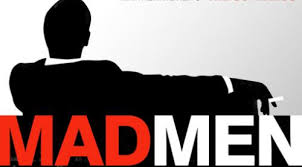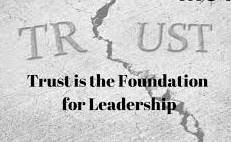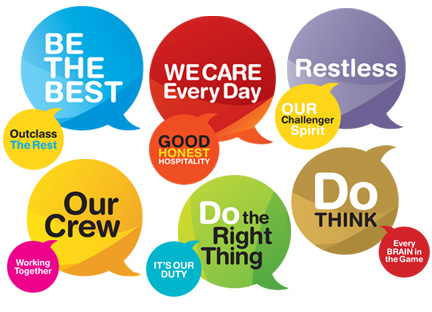Inward Blog
Viewing entries posted in May 2015

Have the Courage to be Uncomfortable So You Can Make Others Comfortable!
May 28, 2015
We get used to doing things a certain way and there is great comfort in that routine and stability. The Myers Briggs Personality Type is a great assessment tool that helps leaders understand their natural behavioral tendencies. There are sixteen different categories, that are based on determining if someone is an extravert or an introvert, whether they perceive and understand based on sensing or on intuition, whether they form judgments and make choices based on thinking or on feeling, and whether their actions are more based on planning or taking things as they come. But understanding our natural tendencies is only the first step in exhibiting strong leadership that drives a culture of employee engagement and inspiration.
Posted by Rick DeMarco at 11:00am
Leadership, Employee Engagement, Professional Development, Personality Assessment

Lessons from Mad Men
May 26, 2015
I will admit straight off that I am a big fan of Mad Men. I lived that life when I started my career at McCann-Erickson in 1975 in Detroit as a media planner. McCann-Erickson was known as Coke’s and Exxon’s agency. With the encouragement of these two clients, McCann-Erickson expanded globally and had multiple offices around the world. I was proud to work for such an advertising conglomerate and leader in the industry. We didn’t have the historical trauma of the Kennedy assassination and the Cuban missile crisis. But we did have the Cold War, Watergate and the Nixon resignation and Vietnam.
Posted by Allan Steinmetz at 11:00am
What Do You Really Know About The People You Lead?
May 21, 2015
One of the top issues facing senior leadership today is the lack of employee engagement among those they lead. Research from a number of sources, including Gallup, Towers Watson, and Modern Survey all indicate that only about 30% of the workforce is fully engaged. So how do you get people engaged?
Posted by Rick DeMarco at 11:00am
Leadership, Employee Engagement, Relationship Building, Professional Development

Trust Doesn't Come with a Title...It Has to Be Earned
May 14, 2015
Trust is at the center of all relationships. In fact, I would go as far as to say that without trust, there is no relationship. One of the greatest leaders of our time, Jack Welch, made the statement in a recent interview that there are two principles of successful leadership today, truth and trust. When trust is violated, our relationships both personally and with our business associates become strained. And if it is violated, it is extremely difficult to restore. Think about the impact of high trust or a lack of trust on our ability to lead others or on our willingness to follow others. When I completely trust what a leader says as demonstrated by what he/she does, my level of engagement goes through the roof and I’ll take the hill for him/her.
Posted by Rick DeMarco at 11:00am

What is Gamification?
May 12, 2015
In the last few years gamification has had phenomenal growth as a means of improving knowledge, employee and customer engagement in a fun, interactive fashion. In fact, gamification is 10 times more effective at information recall than traditional computer-based learning techniques. It also can contribute to greater viral/social communications and peer-to-peer recognition and rewards through leader boards and badges.
Posted by Allan Steinmetz at 11:00am
Gamification, Learning Platforms, LMS, Professional Development, Training, Learning & Development, Internal Communications, Communications Platforms

Is culture really important?
May 7, 2015
Every organization has a culture, whether it’s clearly articulated or not. So what exactly is “culture”? Merriam Webster simply defines it as a “way of thinking, behaving, or working that exists in a place or organization.” Defining the culture always comes down to articulating the values and beliefs of the leadership. For example, if family values are a core belief of leadership, the culture will be one that supports a strong work/life balance focus. Or if innovation is important to the leadership, the culture will be one of continuous improvement and leadership in the market. Apple is an obvious example of an innovation culture. So if vision represents what an organization is trying to achieve, culture defines how people are going to behave and what values they are going to embrace while they strive to achieve that vision.
Posted by Rick DeMarco at 11:00am
Company Culture, Mission, Vision & Values, Employee Engagement, Brand Engagement, Leadership

Put A Face on Your Customer Experience Programs to Avoid Failure
May 5, 2015
It is both logical and common knowledge that there is a direct correlation between high customer experiences with high levels of employee customer experiences. When aligned properly, it provides incremental revenue and customer satisfaction. There have been numerous studies cited by the NRF and Gallup, which substantiates this finding. Yet, all too often I see external customer experience programs falter and fail. They start out with a lot of enthusiasm and support and after about six months, new initiatives and priorities come into play and the customer experience program wanes while the focus shifts somewhere else. Ultimately management loses interest or doesn’t see the benefit/value. The programs get canceled and get the bad rap of being ineffective. I often hear clients say, “we’ve tried that before and it failed.”
Posted by Allan Steinmetz at 11:00am
Customer Experience, Employee Engagement, Brand Engagement, Leadership
